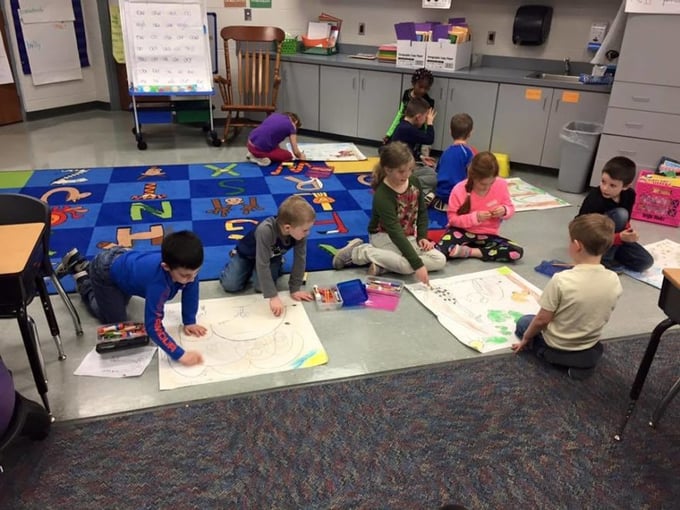Mrs. Wolff has been teaching first grade for 14 years. She's always had a love for science and STEM and was excited to implement new ways for students to learn. Mrs. Wolff has a master's degree in instructional design and technology and ESOL instruction. Mrs. Wolff has served on various school and district committees to make her district the best it can be. She teaches at Wheatland Elementary in Valley Center, Kansas.
When PLTW Launch modules are introduced, students’ eyes light up with excitement. Students quickly learn that they will be learning with their hands, through various approaches, and with the power of peers instead of simply sitting and having information thrown at them through a teacher-led lesson.
When my students are actively involved in a PLTW module, our STEM time can go on for hours. They are actively engaged and participating in the investigations and lessons. The light bulbs are going off throughout the room, and students are excited to share their learning with their friends, their parents, and other teachers in the building. Students are able to transfer not only their learning, but also the engineering process to other subject areas. They persevere through difficult tasks knowing that they will eventually get the outcome they expected, or maybe a different outcome that is even more valuable.
Animal Adaptations is an amazing module. We focus heavily on animal research and how young plants and animals are similar or different from their adult counterparts. Animal Adaptations hit that and more. My students became masters of adaptations and were finding them everywhere around us in our daily lives. They understood why birds had different types of wings and wingspans. They understood why teeth were different and how they benefited not only the animal species, but us as humans.
Once we came to our problem in the module, the students were ready to become biome experts. We did a mini-research unit on their biome, and they typed up a report describing their environment, including exceptionalities and limitations. They dug deep into their learning to discover different adaptations not only animals would need to survive there, but also humans and a human traveler in particular. After groups were experts, they shared their learning with other groups and discussed similarities and differences between the environments. Next the excitement continued to the traveler. Continued discussion among groups of the many animal adaptations that would help the traveler survive helped students create the best prototype they could for a safe shoe.
At the end of the module, my students had an amazing, in-depth understanding of animal adaptations. They understood not only the what, but the why of each adaption and how to apply it to everyday life.
Students thrive when using PLTW Launch modules. They look forward to PLTW lessons and are able to apply cross-curricular skills, bringing learning full circle.
PLTW’s blog is intended to serve as a forum for ideas and perspectives from across our network. The opinions expressed are those of this guest author.

